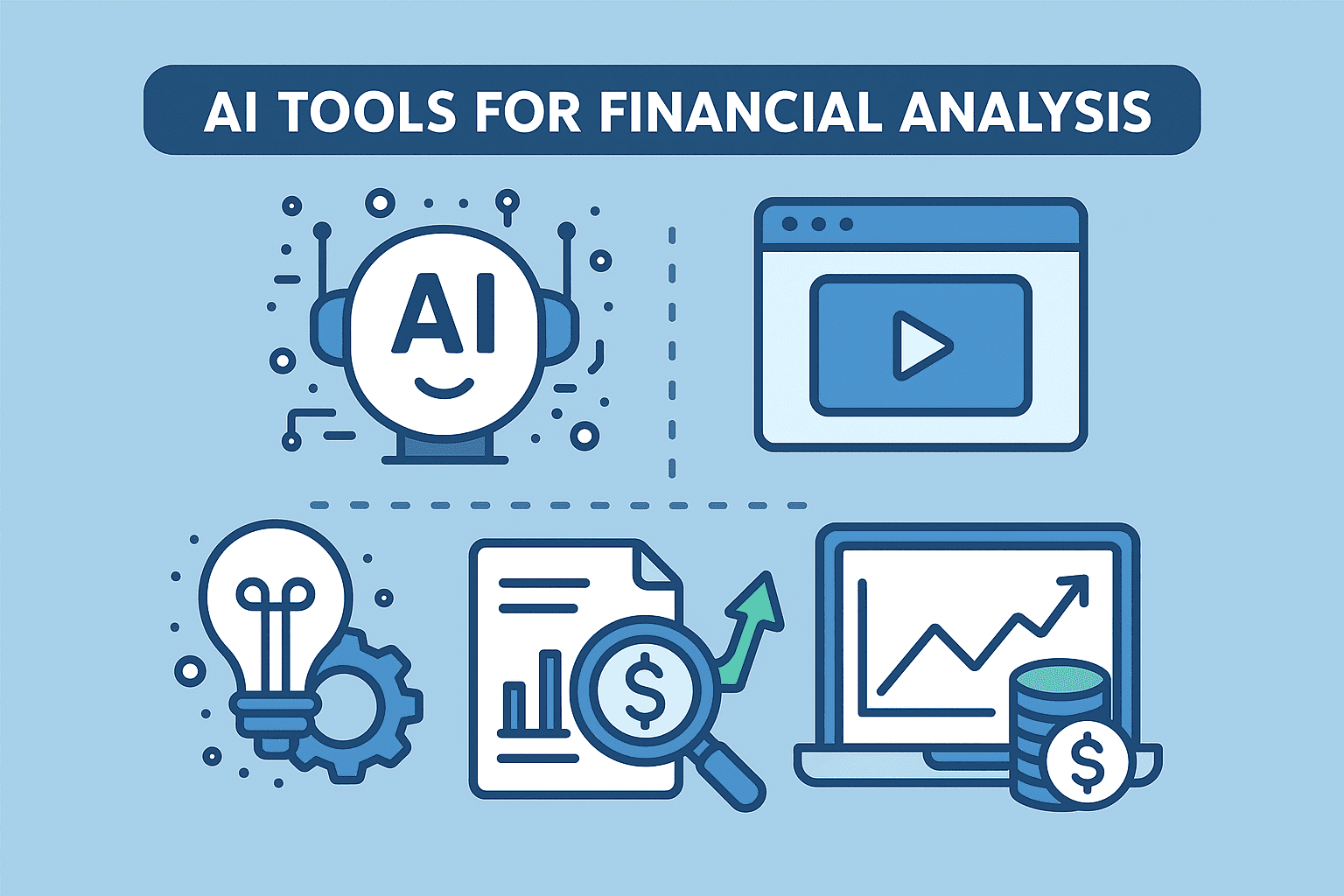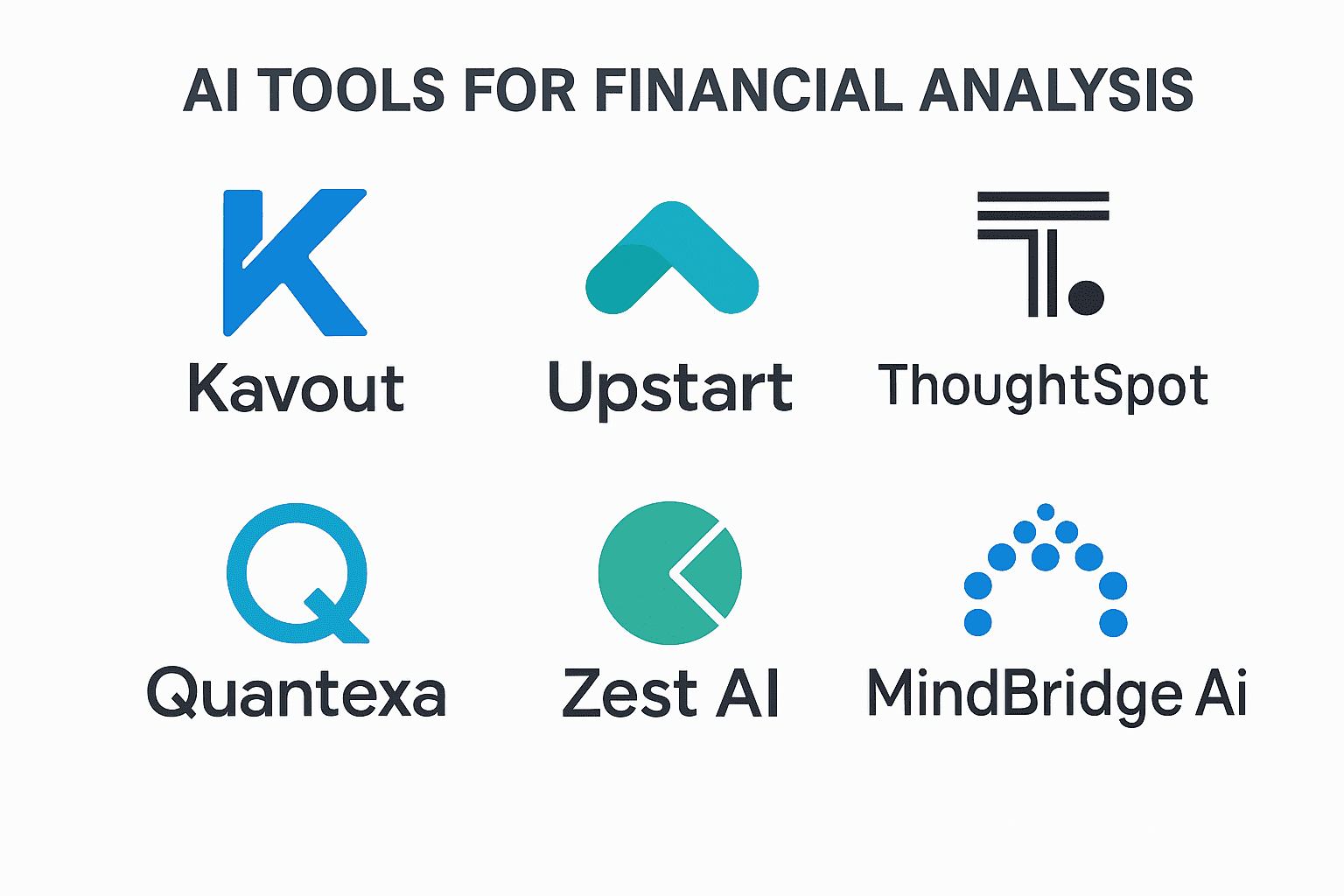AI tools for financial analysis are revolutionizing how finance professionals make decisions in an era where data is as valuable as currency, financial analysts and business leaders are turning to artificial intelligence (AI) tools to transform raw information into actionable insights. AI tools for financial analysis are not just about crunching numbers; they enhance forecasting, improve risk management, detect fraud, and help drive better investment strategies.
As financial data becomes more complex and time-sensitive, manual analysis methods are often too slow and error-prone. AI technologies such as machine learning, natural language processing (NLP), and predictive analytics offer the ability to process vast volumes of financial information quickly and accurately. Whether you’re a CFO, investor, or business analyst, adopting AI-driven tools is now a strategic imperative.

Table of Contents
What Are AI Tools for Financial Analysis?
AI tools for financial analysis are intelligent software solutions that apply data science and machine learning algorithms to assist in the evaluation and interpretation of financial data. These tools help businesses:
- Forecast future revenues and expenses.
- Automate bookkeeping and reporting.
- Detect anomalies and potential fraud.
- Analyze market trends and stock performance.
- Score credit risk and customer behavior.
- Optimize investment portfolios.
Why Use AI Tools in Financial Analysis?
- Speed and Efficiency: AI automates time-consuming processes like data cleaning, transaction classification, and financial modeling.
- Real-Time Insights: Machine learning tools process live data feeds to deliver up-to-date information for decision-making.
- Improved Accuracy: Predictive analytics reduces human error in forecasts and risk evaluations.
- Fraud Prevention: Pattern recognition algorithms can detect fraudulent transactions faster than human reviewers.
- Cost Savings: Automating financial tasks reduces reliance on large finance teams and minimizes overhead costs.
- Scalability: AI can handle increasing volumes of financial data without compromising performance.
Top 15 AI Tools for Financial Analysis in 2025
| Tool Name | Best For | Key Features |
| Kavout | Investment Analysis | AI-powered stock ranking and signal detection. |
| AlphaSense | Market Intelligence | NLP-based research analysis and financial search. |
| Zest AI | Credit Scoring | AI credit decisioning for lending institutions. |
| DataRobot | Predictive Modeling | Automated machine learning for time series forecasting. |
| Ayasdi | Risk Management | Detects patterns and anomalies in complex data. |
| Upstart | Lending and Risk Assessment | AI-based borrower evaluation. |
| Kensho | Economic Event Analysis | Analyzes impact of news and events on markets. |
| Prevedere | Financial Forecasting | Combines internal data with external indicators. |
| ThoughtSpot | Self-Service Analytics | AI-driven financial insights through natural language. |
| Tesorio | Cash Flow Management | Predicts and manages cash inflows and outflows. |
| MindBridge Ai | Auditing and Fraud Detection | AI-enhanced financial audits and anomaly detection. |
| Chata.ai | Conversational Data Querying | Query financial data using everyday language. |
| Sigma Computing | Business Intelligence Reporting | Embedded AI for financial dashboards. |
| Quantexa | Financial Crime Detection | Contextual analytics for money laundering prevention. |
| Clearscore | Credit Monitoring | Real-time credit scoring insights. |

Practical Applications of AI in Financial Analysis
- Forecasting Revenue: Tools like DataRobot and Prevedere use historical and real-time data to predict sales, expenses, and market trends.
- Fraud Detection: Platforms such as MindBridge Ai and Quantexa scan for irregularities and identify potentially fraudulent activity.
- Automated Reporting: ThoughtSpot and Sigma Computing generate dynamic financial reports without manual input.
- Credit Risk Assessment: Zest AI and Upstart leverage alternative data to score applicants who may not qualify through traditional means.
- Cash Flow Projections: Tesorio improves treasury operations by forecasting receivables and payables.
Best Practices for Implementing AI in Financial Analysis
- Set Clear Objectives: Define what you want the AI tool to achieve risk reduction, fraud detection, or forecasting.
- Start Small, Scale Fast: Begin with one use case, test thoroughly, and expand across other financial functions.
- Ensure Data Quality: Clean, accurate, and relevant data is the foundation of reliable AI models.
- Educate Your Team: Train analysts and finance professionals to interpret AI outputs and monitor performance.
- Evaluate Vendors Carefully: Choose tools that offer transparency, compliance support, and user-friendly interfaces.
- Align with Compliance: Ensure your AI implementations meet financial regulations and data privacy laws.
Final Thoughts
AI tools for financial analysis are no longer futuristic add-ons; they’re essential components of modern financial ecosystems. These tools help businesses become more agile, data-driven, and resilient. From speeding up forecasting to uncovering hidden risks, the applications of AI in finance are broad and impactful.
As adoption continues to grow in 2025 and beyond, finance leaders who embrace these tools will have a competitive edge. However, successful implementation depends on more than just the technology, it requires strategic planning, ethical data practices, and continuous learning. By integrating AI into your financial toolkit today, you can unlock smarter insights, reduce operational costs, and make confident, forward-thinking decisions.
FAQs:
What types of companies benefit most from AI financial tools?
Startups, SMEs, large enterprises, and financial institutions all benefit. Any organization dealing with high volumes of data or requiring detailed financial insights can gain a competitive edge from AI.
Are AI tools secure for handling sensitive financial data?
Yes, top AI tools are built with advanced encryption, data access controls, and compliance with financial regulations like GDPR, SOX, and PCI DSS. Still, it’s crucial to vet each tool’s security protocols.
Do I need to be a data scientist to use these tools?
Not necessarily. Many AI tools come with no-code or low-code interfaces that are tailored for finance professionals. With minimal training, most analysts can get started easily.
How do AI tools complement human financial analysts?
AI tools take over data-intensive, repetitive tasks like data entry, reconciliation, and trend analysis allowing human analysts to focus on strategy, interpretation, and big-picture decisions. Rather than replacing analysts, AI enhances their productivity and precision.
What are the challenges of adopting AI in finance?
Key challenges include data privacy concerns, integration with legacy systems, the need for skilled staff, and ensuring regulatory compliance.

